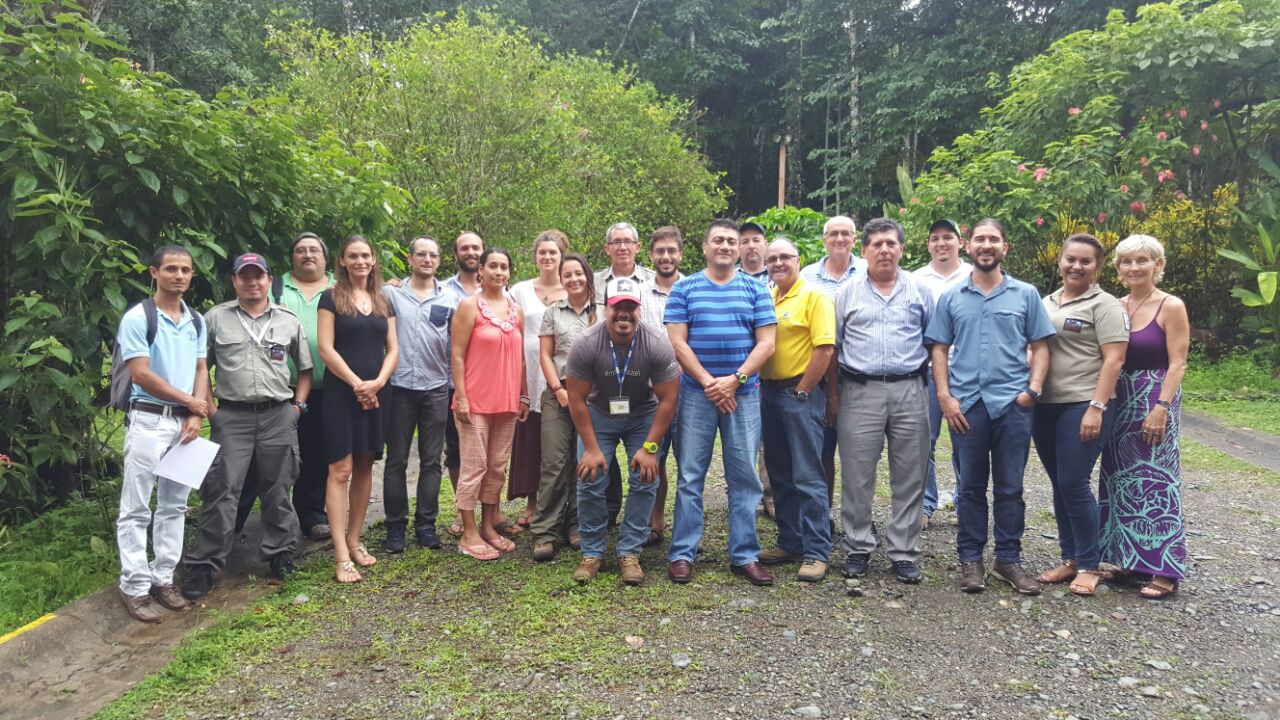Osa Peninsula Regenerative Economy Lab
WHY THE OSA?
The Osa Peninsula was called by National Geographic “the most biologically intense place on Earth”. It houses 2.5% of the world’s biodiversity and half of Costa Rica’s biodiversity. It contains the most significant wetland ecosystem and mangrove forests of Central America and the largest remaining tract of lowland rainforest in Pacific Mesoamerica. It is home to the largest population of Scarlet Macaws in Central America, over 700 species of trees (more than all the temperate regions combined), species found no where else in the world, and turtle nesting sites for 4 species of endangered sea turtles. Separating the Osa Peninsula from the mainland is the Golfo Dulce Bay – one of only 4 tropical fjords on the planet and a vital nursery for both northern and southern humpback whales and hammerhead sharks.
The Osa Peninsula is at an important juncture. Historically, it has been very difficult to access making it less desirable to developers and tourists. However, with increasing infrastructure and desire to visit by tourists, it is facing a critical choice between rapid unsustainable growth or steady sustainable development. There are many threats: unsustainable palm oil expansion polluting the ecosystem; poverty driven wildlife poaching and illegal logging and mining; historical lack of effective governance and public services due to corruption; lack of jobs and land insecurity due to inadequate conservation policy regulations, international land acquisitions, and poor education; ill advised, mass tourism development projects including a recently-built large marina and Hilton resort and a proposed international airport that threatens sustainable development; and siloed actions and funding of most stakeholders. These are all symptoms of systemic challenges. What are the root causes? What are the leverage points for collective action that can ensure a shared future vision of a thriving ecosystem, thriving blue/green economy, and thriving communities? What capacity support infrastructure is necessary to increase the success of project implementation? How can systems financing of projects reduce risk in the market and create enabling conditions for systems-wide savings and reliable, if not higher-performing, triple bottom line returns?
Systemic challenges need systems solutions. The Osa Peninsula Regenerative Economy Lab (REL) aims to address these questions together with the Indigenous People and Local Communities of the Osa Peninsula, pre-existing donors, government institutions, local and national organizations, and investors.
RATIONALE
The challenges society faces are recognized to be more systemic in nature, requiring holistic thinking and collaboration of multiple parties to create truly effective solutions. Systems innovation addresses such complexity through an evidence-based and participatory process. Historically, there have been many efforts in the Osa Peninsula to support individual projects and initiatives. However, these efforts have been disjointed and have led to very little change at the expense of significant time and resources. The need for local leaders, donors, and investors to come together around a sustainable development plan with strategic project implementation and an optimized financing strategy is becoming increasingly critical to coordinate efforts so that they are more efficient, comprehensive, and socially- ecologically- and financially-effective. And the evidence is glaring that the key constriction point to this potential is the capacity of local people to plan, structure, propose and oversee effective projects that could respond to systemic investments.
THE PROJECT
Regenerative Economy Lab (REL) has been developing with local Indigenous People and local community and governmental leaders, a regenerative blue/green economy model and systems financing approach to conservation and sustainable development in the Osa Peninsula, Costa Rica, since 2015. We seek to learn together how to create a thriving economy, community, and culture that is dependent on and enhances the health of the rainforest and marine ecosystems.
Our earlier systems mapping analysis work in the region shows that the Indigenous People and local communities of the Osa Peninsula collectively desire a regenerative future, one that enables thriving communities, ecosystems, and a blue/green economy. Our premise is that if there is a shared understanding of the systems dynamics and vision of the region, projects, businesses, and actions are selected with a systems criteria to enable this vision, and the enabling conditions are in place, then systems change can be actualized.
In 2017, the Osa Territorial Council, a local governance body made up of 60% civic and 40% government representation, began selecting high leverage projects with a systems lens that would potentially have the greatest likelihood of impact, however, with a lack of capacity support these projects over time were considered high risk and underdeveloped, and thus struggled to receive the funding needed to implement them. Regenerative Earth was then asked to help address this capacity gap as a high leverage point in the system, so that these projects and future projects would have ongoing capacity strengthening support to effectively plan, develop, and implement projects and receive the funding needed.
In 2022, the Regenerative Economy Lab co-founded the Center for Strategic Development in the Osa Peninsula (CEDPO) with the Institute of Rural Development (INDER) and the Osa Territorial Council (OTC). CEDPO was created to help develop and manage the Sustainable Development Plan of the Osa Peninsula Territory, to select projects using a systems criteria, to strengthen the capacities of projects, organizations, and leaders, to connect projects with alliances, organizations, and resources, to systemically and collaboratively invest in projects selected by CEDPO alongside other funders in the region, and to strengthen the OTC and the Board of Directors (JD) of the OTC.
The learning, structures, and processes we develop are intended to be shared and scalable to advance the field of systems change during a time when humanity faces systemic challenges that can only be solved by systems solutions.

OSA PENINSULA SYSTEMS MAPS 2015

Osa & Golfito Systems Theory of Change with Initial Systems Financing Overlay

2024 UPDATED OSA PENINSULA SYSTEMS MAP VIA KUMU INC.
PROJECTS WE SUPPORT
RAISING CORAL

STRENGTHENING CULTURAL SYSTEMS WITH THE FAMILIES OF THE NGÄBE COMMUNITY OF THE ALTO LAGUNA TERRITORY





ASSOCIATION OF ARTISANS AND RECYCLERS OF OSA (ASAOSA)
OSACOOP
A cooperative of 109 small scale farmers in the Osa Peninsula.



TRADITIONAL KNOWLEDGE AND USES OF SEEDS, PLANTS, AND TREES
GUERREROS DE LA SALUD (Health Warriors)
PUEBLOS UNIDOS TURISMO ARQUEOLÓGICO (Pueblos Unidos Archaeological Tourism)
COMISIÓN PLAN DE MANEJO DE RESIDUOS SÓLIDOS (Solid Waste Management Plan Commission)
ASOCIACIÓN DE PESCADORES DE PUERTO JIMÉNEZ
RESCATE DE VALORES (RESCUING VALUES)



